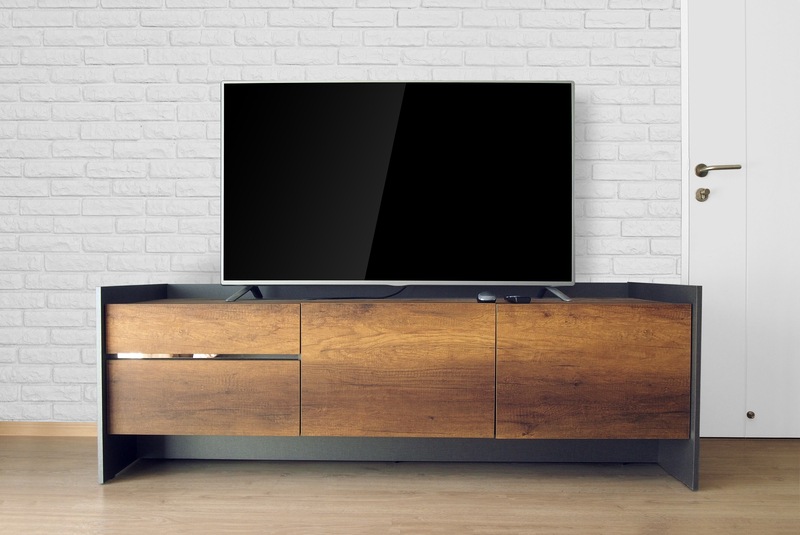Preserve Your Sofa: Essential Strategies for Long-Term Storage Success
Posted on 18/05/2025
Preserve Your Sofa: Essential Strategies for Long-Term Storage Success
Your sofa is more than just a piece of furniture—it's a valuable asset and a centerpiece of your living space. Whether you’re downsizing, moving, or renovating, you might find yourself needing to store your sofa for an extended period. However, improper storage can spell disaster for even the sturdiest couches. To truly preserve your sofa during long-term storage, proper preparation and strategic care are essential. This comprehensive guide details expert-recommended techniques and best practices to ensure your treasured sofa remains in pristine condition, ready for enjoyment when you reclaim it.
Why Preserving Your Sofa During Storage Matters
Sofas are susceptible to a host of storage dangers—moisture damage, mold, pests, and even warping. Long-term sofa storage demands thoughtful planning to maintain upholstery quality, frame integrity, and overall appearance. Failing to properly protect your sofa can result in costly repairs or the need for premature replacements.
- Avoids permanent stains and discoloration
- Prevents mold, mildew, and unpleasant odors
- Keeps the sofa’s frame from warping or breaking
- Reduces the risk of pest infestations
- Retains overall comfort and support
If you plan to store your couch for several months (or longer), investing time in preservation strategies is a must.

Pre-Storage Preparation: Cleaning Your Sofa
1. Vacuum Thoroughly
Begin by using a vacuum cleaner with an upholstery attachment. Focus on all surfaces, seams, and crevices—especially under cushions. Dust, pet hair, crumbs, and dirt can attract pests and lead to stains during storage.
2. Deep Clean the Upholstery
- Fabric sofas: Check the manufacturer's instructions or cleaning tags. Most allow for gentle upholstery cleaners or a mix of water and mild soap. Spot clean heavily soiled areas.
- Leather sofas: Use a dedicated leather cleaner and conditioner to clean and hydrate the material, preventing drying or cracking.
- Microfiber sofas: Use a soft brush and appropriate cleaner or a small amount of rubbing alcohol.
Tip: Always allow your sofa to dry completely before storage. Moisture is the #1 enemy!
3. Remove Odors
Sprinkle baking soda over fabric surfaces and let it sit for 15-20 minutes before vacuuming. For lingering smells, place an odor absorber nearby during storage (activated charcoal bags work well).
Selecting the Right Storage Space for Your Sofa
1. Temperature and Humidity Control
Climate-controlled storage units are ideal for long-term sofa storage. Extreme temperatures and fluctuating humidity create the perfect environment for mold, mildew, and frame damage.
- Maintain consistent humidity levels (ideally between 30-50%) to prevent warping and rot.
- Keep storage temperatures stable (around 55°F–85°F is optimal).
Storing your couch in a garage or basement? Proceed with caution! These spaces often lack climate control and are more prone to pests and dampness.
2. Consider Security and Cleanliness
- Opt for reputable storage facilities with good security (cameras, gated entry, on-site staff).
- Inspect the unit for signs of leaks, insects, or previous water damage.
- Cleanliness matters—avoid locations with excessive dust or debris.
Properly Preparing Your Sofa for Storage
1. Disassemble When Possible
If your sofa has removable legs or arms, take them off and store them with the couch to reduce its footprint and minimize strain on the frame.
- Keep all hardware (screws, bolts) in a labeled bag and tape it securely to the sofa or a leg.
- Remove and wrap separate cushions and pillows for extra protection.
2. Wrap Your Sofa for Maximum Protection
Correct wrapping is critical in preserving your couch for long-term storage:
- Use moving blankets or soft cotton sheets for the first layer. These are gentle yet protective.
- Never wrap fabric or leather sofas directly in plastic for long-term storage—plastic traps moisture, which can lead to mold or mildew.
- For added security, wrap a plastic covering or shrink-wrap over the blankets in areas most prone to dust, but ensure air can circulate.
- Secure all wrapping completely with tape or bungee cords, but never tape directly onto the sofa’s surface.
Don’t forget the feet—cover wooden or metal feet with felt covers or bubble wrap to prevent scratches and corrosion.
3. Avoid Pressure Points and Crushing
- Never stack heavy boxes or items on top of your sofa in storage.
- Position your couch so that no part is under excessive pressure—crushing can distort the frame and permanently indent cushions.
- Try to store your sofa upright in its natural position (not on its side or upside down).
Choosing the Best Storage Environment
1. Indoor, Climate-Controlled Units vs. Outdoor Sheds
For long-term couch preservation, indoor storage is non-negotiable. Outdoor sheds are vulnerable to weather, pests, and high humidity levels—conditions that can quickly ruin upholstery and wood frames.
- Indoor units keep your sofa clean and safe from temperature-related stress.
- Climate-control offers added defense against mold, mildew, and cracking.
2. Elevate Your Sofa Off the Floor
Even minor flooding or dampness can be disastrous for sofas, especially those with fabric skirts or wooden legs.
- Use pallets, wooden planks, or blocks to raise your sofa several inches above the storage unit floor.
- This step prevents water damage and reduces the risk of pest infestations.
Pest Prevention: Keeping Unwanted Guests at Bay
Pests pose a serious threat when storing couches and soft furniture long-term. They’re drawn to dark, undisturbed environments—and your sofa has all the right ingredients!
- Inspect your storage unit for holes, gaps, and signs of existing infestations.
- Use natural repellents like cedar blocks, lavender sachets, or moth balls (placed near but not directly on the sofa).
- For added security, sprinkle diatomaceous earth around the sofa’s base; it’s safe and effective against many insects.
- Never store food products or items that could attract rodents alongside your sofa!
Long-Term Maintenance: Checking on Your Stored Sofa
1. Regular Inspection
No matter how well you prepare, periodic checks are crucial for effective long-term sofa storage. Visit your storage unit every few months to:
- Look for signs of mold or mildew (smell, discoloration, spots)
- Check for insect droppings, webs, or rodent activity
- Adjust wrapping if it’s loosened or collapsed
- Ventilate the unit for a short period if possible
*If you detect a problem, address it immediately—early intervention can save your sofa from irreparable harm!
2. Rotating and Restoring Shape
- If your sofa is accessible, gently reposition cushions and pillows to prevent permanent dents and flattening.
- Fluff or rotate loose cushions to distribute pressure evenly.
Unpacking and Reintegrating Your Sofa After Storage
1. Careful Unwrapping
When it’s time to bring your sofa out of storage, unwrap it slowly and inspect every surface. Look for any hidden pests, moisture, or damage that need attention.
2. Odor Removal and Cleaning
- Vacuum all surfaces again before bringing your sofa indoors.
- If needed, deodorize with baking soda or an upholstery-safe spray.
- Treat any developing stains or spots promptly.
- Allow the sofa to air out thoroughly before regular use.
3. Reassemble and Restore
- Reattach legs and other removed parts as per manufacturer instructions.
- Fluff cushions and consider professional cleaning for long-stored sofas.
Bonus Tips for Successful Long-Term Sofa Storage
- Insurance Check: Invest in storage insurance for valuable furniture in case of unexpected damage or disaster.
- Inventory Photos: Take detailed photos of your sofa before and after storage for documentation and insurance claims.
- Air Circulation: Avoid sealing your sofa too tightly to promote airflow and reduce the risk of mold.
- Clear Access: Keep your sofa accessible in the unit; don't bury it in hard-to-reach corners.
- Label Everything: Use clear labels on wrapped cushions, hardware bags, and wrapping for easy reassembly.

Conclusion: Secure Your Sofa's Future with Smart Storage Practices
Properly preserving your sofa during long-term storage is an investment in both comfort and value. By following these essential strategies, you guarantee that your sofa, couch, or settee emerges from storage as comfortable and beautiful as it was when first tucked away. From meticulous cleaning and careful wrapping to vigilant long-term checking—each step is crucial in ensuring long-term storage success.
Your sofa deserves the best protection. Follow these expert strategies to safeguard your favorite seat and ensure it stays inviting for years to come—no matter how long it spends in storage!
Frequently Asked Questions About Sofa Preservation During Storage
How do I prevent my sofa from smelling musty after storage?
Thoroughly clean and dry your couch before storage, use odor absorbers like baking soda, and ensure proper airflow within the storage space.
Is it okay to store leather sofas long-term?
Absolutely, but it's vital to clean, condition, and wrap leather sofas correctly. Opt for climate-controlled units to avoid drying or cracking.
Can I store my sofa in a garage?
Garages are not ideal for long-term couch storage due to fluctuating temperatures and humidity, which can cause mold, odor, or frame warping.
Do I need to remove sofa legs for storage?
If possible, yes—removing legs protects both the sofa and legs from bending and makes it easier to wrap and store the furniture safely.
By prioritizing proper sofa preservation, you ensure the long-term success and beauty of your favorite furniture piece—no matter where life takes you!



